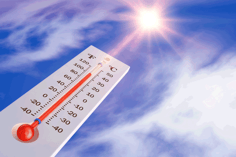
On October 27, the US federal Occupational Safety and Health Administration (OSHA) has published an “advanced notice of proposed rulemaking (ANPRM)”, as the first step toward national heat illness prevention rules. This action is the agency’s second recent step to define and combat these hazards – several states already administer such rules. OSHA’s first step was to release new “Inspection Guidance for Heat-Related Hazards” on September 1 (I wrote about it HERE). The remainder of this note summarizes issues raised and questions asked in the ANPRM.
How Can Heat Cause Illness?
I’ve summarized the health and safety implications of working in a hot working environment several times, most recently in the note cited above. In short, a worker’s body sheds heat to maintain a stable internal temperature, mainly by circulating blood to the skin, and by sweating and thermal radiation. These become less effective as air temperature and/or humidity rise. Even when these work, the worker’s body tends to heat up, and fluids and salts lost in sweat will have to be replaced.
Occupational health and safety professionals capture these issues with indices that factor temperature and humidity into standards for heat risks, such as the National Weather Service (NWS) “heat index.” OSH agencies start with these environmental indices, and add explicit consideration of how strenuous worker activities are, and how confining and heat-retaining their clothing and gear.
What questions does the latest ANPRM ask?
In the ANPRM, OSHA introduces a number of heat-related issues, and asks for comments on a total of 95 questions that will inform its subsequent rulemaking. Thes are organized as follows:
-
Introductory/overview questions – 3 questions about health and safety impacts, sources of data, and available studies
-
Under-reporting of illnesses, injuries, and fatalities – 3 questions about sources of information about the extent of under-reporting, of contributing factors, and available datasets
-
Data across industries, occupations and job tasks – 2 questions about industries, occupations and jobs to be considered, and about any changes in these that affect the rate and frequency of illnesses and injuries
-
Structure of work and work arrangements – 3 questions about how work structure affects risks and outcomes, about current and best practices, and about current challenges and limitations
-
Business size – 2 questions about how current efforts may vary with business size, and whether and how size affects heat illness issues
-
Geographic regions – 4 questions about regional variations in exposures, familiarity and responses
-
Inequality in exposures and outcomes – 3 questions regarding availability of information distinguishing exposures and outcomes across various racial, ethnic and socio-economic populations
-
climate change – 5 questions about current and projected climate change effects on heat exposures, and how OSHA should factor these into its heat illness standard
-
OSHA’s existing efforts – 3 questions about OSHA’s existing efforts, gaps and limitations, and how they might be improved
-
State standards – 5 questions about existing state standards (in California, Minnesota, Oregon and Washington), including their effectiveness, challenges to implementation, and which elements OSHA should or should not incorporate into a federal standard
-
Other standards – 3 questions about other standards (International Organization for Standards (ISO), American Conference of Governmental Industrial Hygienists (ACGIH), US armed forces) including which elements would or would not be appropriate for OSHA to incorporate, and whether there are additional standards to consider
-
Employer efforts – 2 questions about what additional employer efforts are underway, and their effectiveness
-
Heat exposure metrics – 8 questions about which metrics are in use, and their (dis)advantages, current and best practices, and whether additional metrics might be useful
-
Contributions to heat stress in the workplace – 7 questions about ambient and activity-related contributions to heat stress in indoor and outdoor workplaces, including whether factors under consideration should be refined or expanded, and appliable individual-level risk factors
-
Strategies to reduce occupational heat-related injury and illness – 4 questions about heat-related injury and illness prevention programs
-
engineering controls, administrative controls, and personal protective equipment – 9 questions about measures in use, their advantages and disadvantages, and available data
-
Acclimatization – 5 questions about current and best practices and their effectiveness and challenges
-
monitoring – 11 questions about exposure, medical, and physiological monitoring practices and programs
-
Planning and responding to heat-illness emergencies – 7 questions about current and best practices, and their challenges
-
Worker training and engagement – 5 questions about current and best practices in training and employee involvement, and their challenges
-
Costs, economic impacts, and benefits – 12 questions about data sources, OSHA current requests and uses for data, possible additional data elements and sources, and commenters’ use of data
-
Impacts on small entities – 7 questions about differences in benefits and burdens in small employer workplaces
Now what?
Comments are due by December 27. OSHA does not offer a subsequent timeline for issuing a formal proposal or final rules, but it seems likely the agency will accelerate its activities so there will be further actions before temperatures rise into summer 2022.
Self-Assessment Checklist
Do any of my organization's workers work in situations where ambient heat may create a hazard of heat illness:
-
Outdoors (e.g., agricultural or construction work)?
-
Indoors (e.g., work in manufacturing or other processes involving hot materials or equipment)?
If so, does the organization provide appropriate:
-
Training (tailored to the workplace source(s) of heat hazards, preventive measures, and responses to heat illness?
-
Water?
-
Shade or other appropriate ways for workers to cool down?
-
Planning and procedures?
Is the organization following this OSHA rulemaking, and if so is it preparing comments?
Where Can I Go For More Information?
- OSHA
- ANPRM (10/27/21 Federal Register)
- California –
- Cal/OSHA “Heat Illness Prevention webpage
About the Author
 Jon Elliott is President of Touchstone Environmental and has been a major contributor to STP’s product range for over 30 years.
Jon Elliott is President of Touchstone Environmental and has been a major contributor to STP’s product range for over 30 years.
Mr. Elliott has a diverse educational background. In addition to his Juris Doctor (University of California, Boalt Hall School of Law, 1981), he holds a Master of Public Policy (Goldman School of Public Policy [GSPP], UC Berkeley, 1980), and a Bachelor of Science in Mechanical Engineering (Princeton University, 1977).
Mr. Elliott is active in professional and community organizations. In addition, he is a past chairman of the Board of Directors of the GSPP Alumni Association, and past member of the Executive Committee of the State Bar of California's Environmental Law Section (including past chair of its Legislative Committee).
You may contact Mr. Elliott directly at: tei@ix.netcom.com

